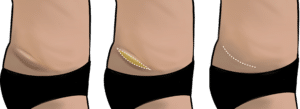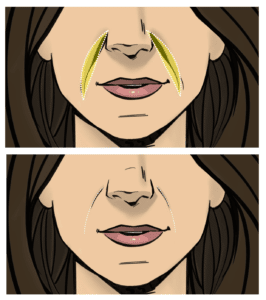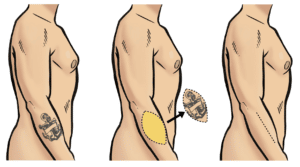|
Procedure
|
Unsightly scars, tattoos or skin folds can cause aesthetic concerns. Scars can also cause functional problems by restricting movement or by retracting skin.
Most scars can be narrowed or released with surgery. Some scars are difficult to treat because of underlying genetic problem such as keloid scars. In these cases, non-surgical treatments such as massage, silicone creams or steroid injections are often better. Tattoos can often be excised in one or several stages, Large tattoos can sometimes be shaved off. This can leave some pigment and a scar behind. Lax areas or skin folds can be excised, leaving a narrow scar behind in most cases. These scars often heal well in the face and can be made less conspicuous by carefully planning the direction of the scars.
The wounds are repaired with sutures under the skin which do not require removal and dissolve within four months. In coloured skin, high factor sun protection for over a year is important
|
|
Scars
|
Along the main direction of the scar or tattoo or the area of laxity, occasionally longer
|
|
Operation time
|
1 hour
|
|
Anaesthesia
|
Local
|
|
Hospital Stay
|
Day Surgery
|
|
Benefits
|
Aesthetic, Psychological, Functional, Symptomatic
|
|
Risks
|
Bleeding, Infection, New or recurrent scar problems (stretched, thick, abnormal pigmentation, red, longer, retracted etc.), Skin discoloration, New or remaining skin cones, Remaining pigment in tattoo removals, Wound separation, Slough, Necrosis, Pain, Nerve injury (Numbness, weakness, paralysis), Bruising, Swelling, Overcorrection, Undercorrection, Asymmetry if affecting both body sides, Aesthetic imperfections (higher risk after skin stretching or wound irritation / healing problems), Organ injury, Functional problems, Contour irregularities, Need for further surgery, Allergic reaction.
N.B. Most complications are unlikely. Serious risks or death are rare
|
|
Risk factors
|
Smoking within 6 weeks of surgery, overweight, high blood pressure, bleeding tendency (Stop herbal products or supplements for two weeks before surgery), diabetes, pregnancy / irritation / weight changes if near the scar area
|
|
Optimising factors
|
Diet rich in Vitamin C and protein, plenty of fluids, fresh air, scar massage, sun protection, silicone gels or sheets
|
|
Discomfort
|
1 - 2 weeks
|
|
Bruising
|
2 - 3 weeks
|
|
Recovery
|
Light activities 2 weeks, Physical work and sports 6 weeks (Depending on surgery location)
|
|
Acceptable appearance
|
2 - 4 weeks for most patients (This is subjective)
|
|
Final result
|
6 - 18 months
|
|
Alternatives
|
No Surgery, Aesthetic products; Silicone sheets, gels, steroid injections or radiotherapy for scars; Laser for tattoos.
|



